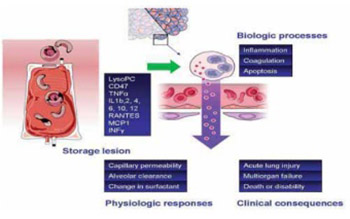Red Blood Cell Storage Lesion
DOI:
https://doi.org/10.17305/bjbms.2009.2750Keywords:
red blood cell transfusion, storage lesion, transfusion effiacacy, transfusion risksAbstract
The past two decades have witnessed increased scrutiny regarding efficacy and risk of the once unquestioned therapy of red blood cell (RBC) transfusion. Simultaneously, a variety of changes have been identified within the RBC and storage media during RBC preservation that are correlated with reduced tissue oxygenation and transfusion-associated adverse effects. These alterations are collectively termed the storage lesion and include extensive biochemical, biomechanical, and immunologic changes involving cells of diverse origin. Time-dependent falls is 2,3-diphosphoglycerate, intracellular RBC adenosine triphosphate, and nitric oxide have been shown to impact RBC deformability and delivery of oxygen to the end-organ. The accumulation of biologic response modifiers such as soluble CD40 ligand (sCD40L), lysophosphatidylcholine (lyso-PC), and Regulated on Activation, Normal T-cell Expressed and Secreted (RANTES) have been associated with altered recipient immune function as well. This review will address the alterations occurring within the RBC and storage media during RBC preservation and will address the potential clinical consequence thereof.
Citations
Downloads

Published
How to Cite
Accepted 2017-11-30
Published 2009-10-20









